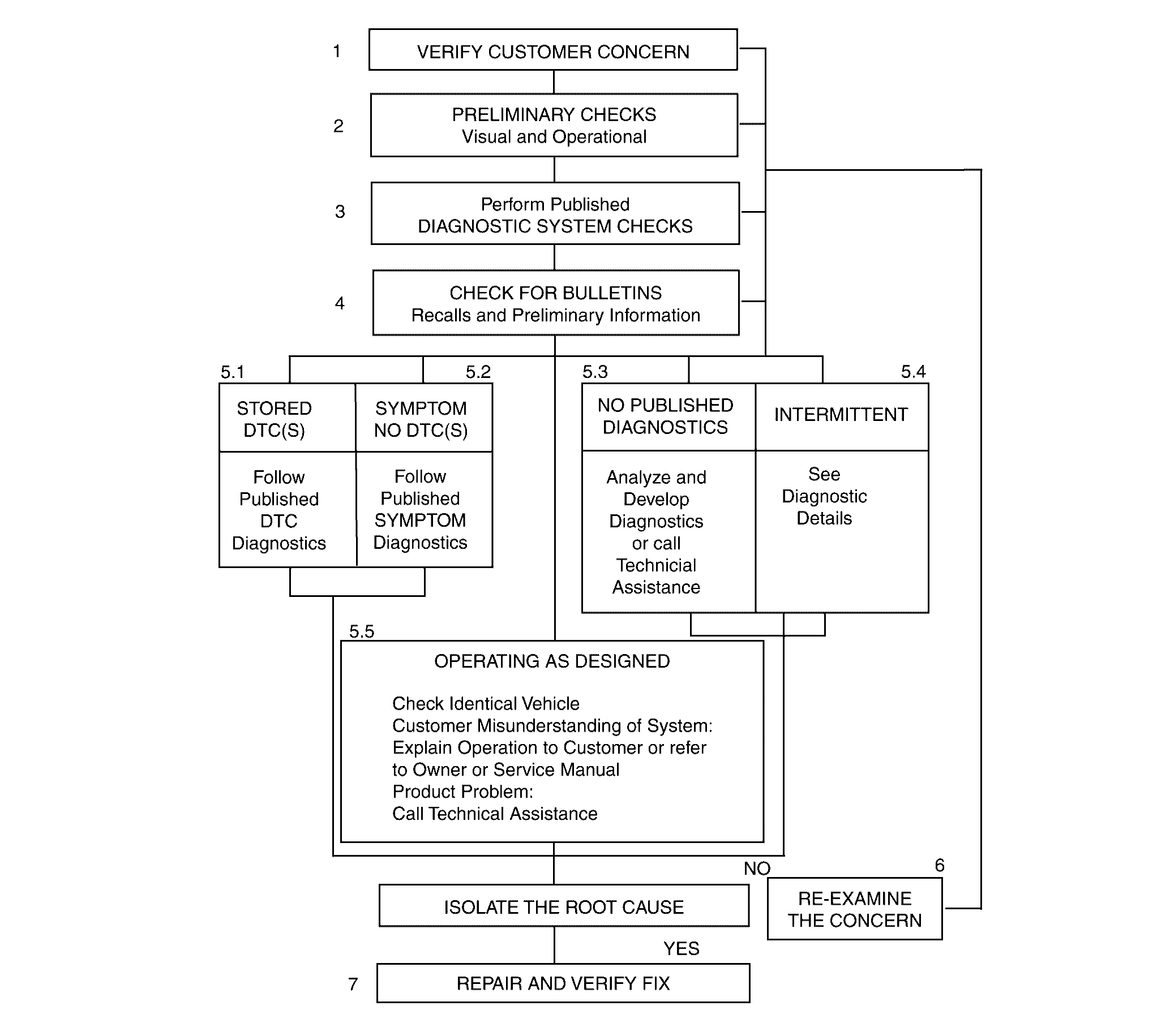|
|---|
| (1) | Verify the
Customer Concern: The first part of this step is to obtain as much information as
possible from the customer. Are there aftermarket accessories on the vehicle? When
does the condition occur? Where does the condition occur? How long does the condition
last? How often does the condition occur? In order to verify the concern, the technician
should be familiar with the normal operation of the system and refer to the owner
or service manual for any information needed. |
| (2) | Preliminary
Checks: Conduct a thorough visual inspection. Review the service history. Detect unusual
sounds or odors. Gather diagnostic trouble code (DTC) information in order to achieve
an effective repair. |
| (3) | Perform Published
Diagnostic System Checks: One or more DTCs may not support a system. System checks
verify the correct operation of the system. This will lead the technician in an organized
approach to diagnostics. |
| (4) | Check Bulletins
and Other Service Information: Check for any information available which has a repair
for the condition causing the customer concern. |
| (5.1) | Stored DTCs:
Follow the designated DTC table exactly in order to make an effective repair. |
| (5.2) | Symptom No
DTC: Select the symptom from the symptom tables. Follow the diagnostic steps or suggestions
in order to complete the repair, or refer to the applicable component/system check. |
| (5.3) | No Published
Diagnostics: Analyse the Concern. Develop a plan for the diagnostics. The service
manual schematics will help you to see system power, ground, input and output circuits.
You can also identify splices and other areas where multiple circuits are tied together.
Look at component locations to see if components, connectors or harnesses may be exposed
to extreme temperature, moisture, road salt or other corrosives battery acid, oil
or other fluids. Utilise the wiring diagrams, system description and operation, and
system circuit description. |
| (5.4) | Intermittents:
An intermittent condition is one that does not occur continuously and will occur when
certain conditions are met. Generally, intermittents are caused by faulty electrical
connections and wiring, malfunctioning components, electromagnetic/radio frequency
interference, and aftermarket equipment. Combine technician knowledge with efficient
use of the available service information. Evaluate the symptoms and conditions described
by the customer. Use a check sheet or other method in order to identify the component.
Follow the suggestions for intermittent diagnosis found in the service manual. The
scan tool has data capturing capabilities that can assist in detection of intermittents. |
| (5.5) | Vehicle
Operates as Designed: This condition exists when the vehicle is found to operate normally.
The condition described by the customer may be normal. Verify against another like
vehicle that is operating normally under the same conditions described by the customer.
Explain your findings and the operation of that system to the customer. |
| (6) | Re-examine
the Concern: If a technician cannot successfully find or isolate the concern, a re-evaluation
is necessary. Re-verify the concern. The concern could be an intermittent or normal. |
| (7) | Repair and
Verify Fix: After isolating the cause, make the repairs and validate for correct operation.
Verify that the symptom has been corrected, which may involve road testing the vehicle. |

